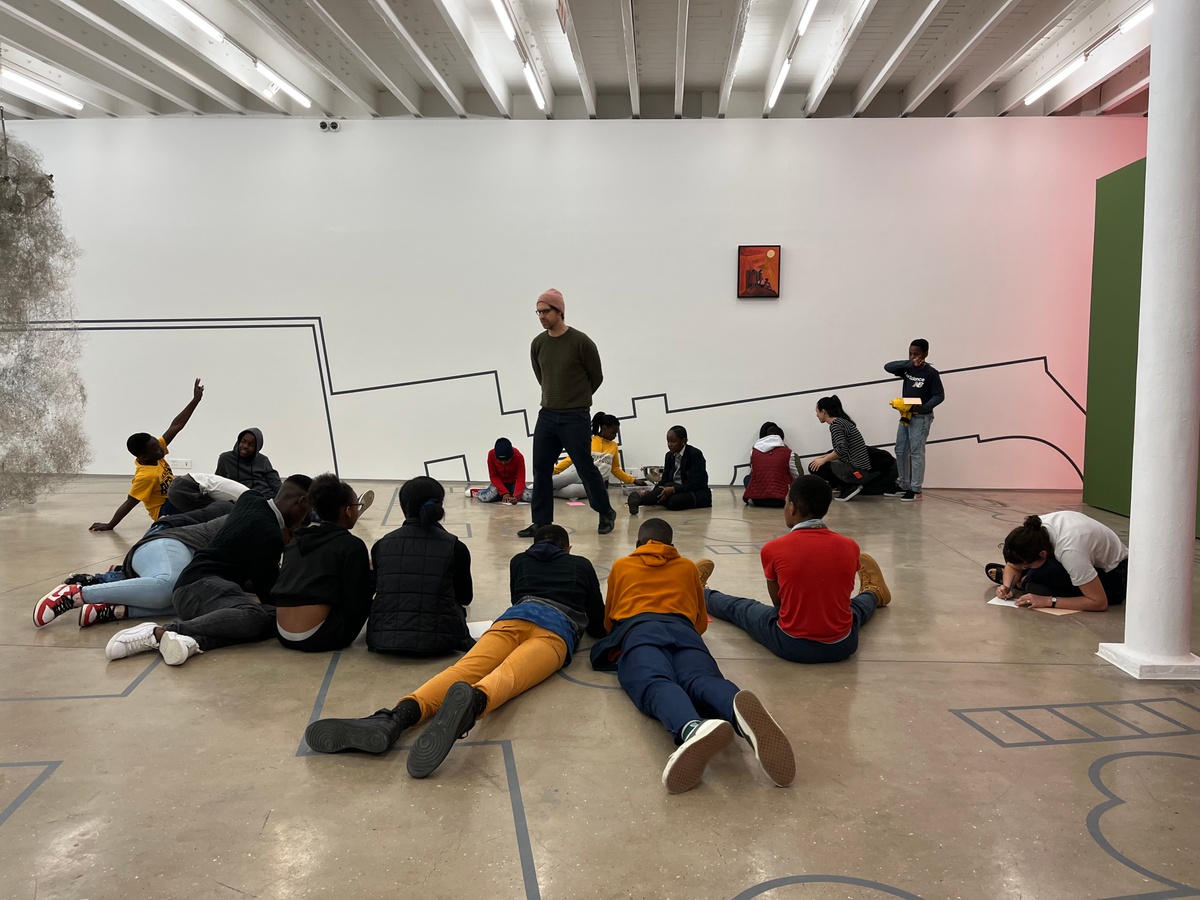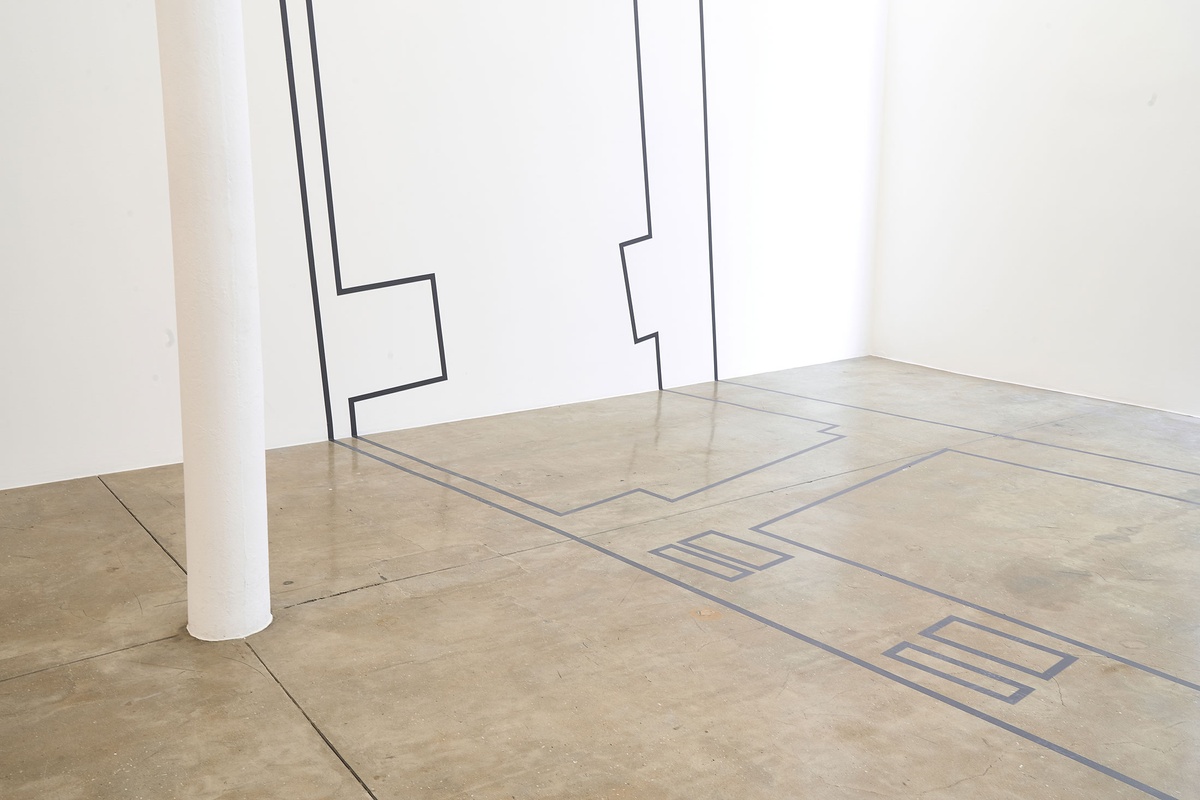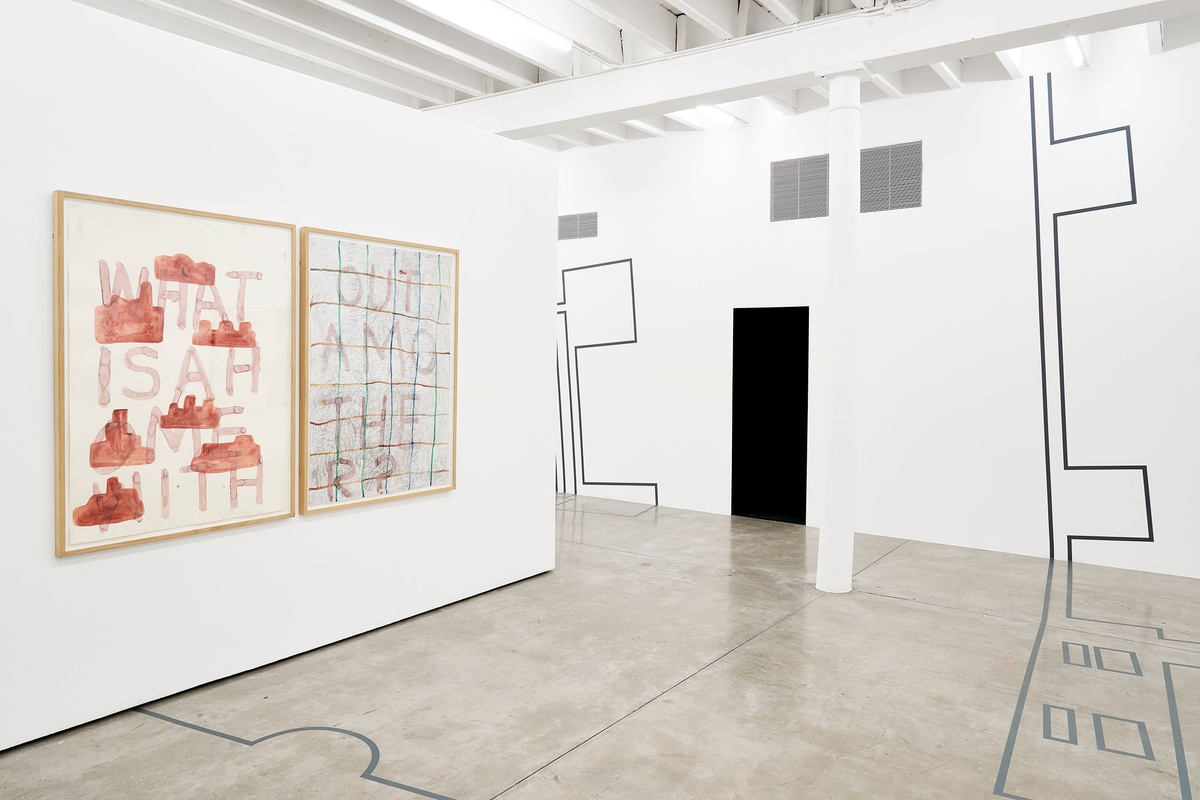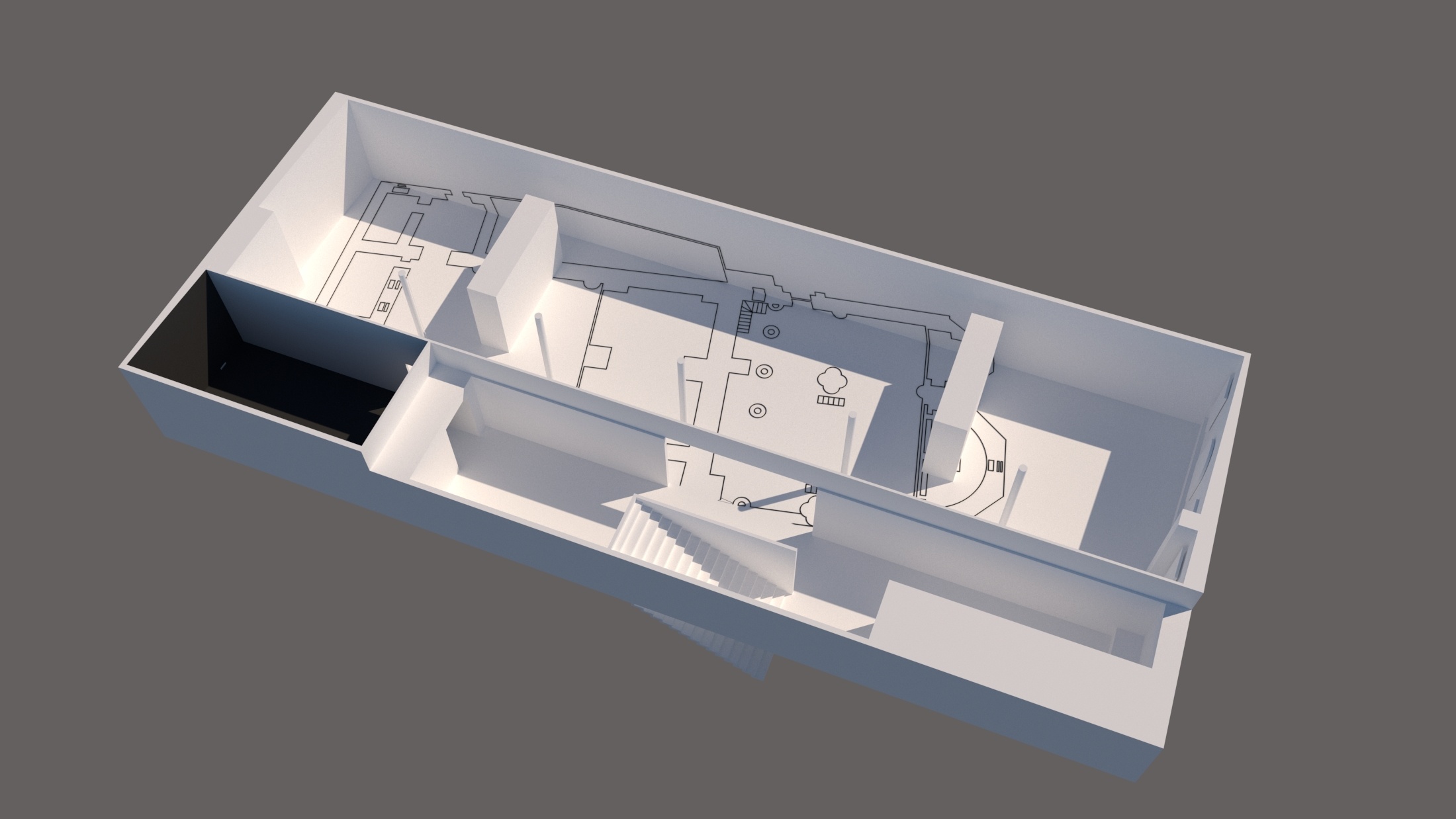Dor Guez

“In the town where I grew up, a church and a mosque share a wall,” Dor Guez writes of the church and mosque in Lydda that contain – and are contained within – parts of one another. Between them, they share one another’s features and multiple tellings of a story. Double Stitch is a new installation by Dor Guez that underpinned the exhibition Customs at A4: an interpretation of the floor plan for St George’s Greek Orthodox Church and the adjacent El-Khidr Mosque, which in its enactment in the foundation's Gallery has been tugged askew at the corners. A forensic walk within and without the map reveals its signs and symbols: built in the 19th century over a 12th-century Crusader structure and a 14th-century Mamluk mosque, there are stairs to the crypt, a series of columns, an apse. The Greek Orthodox Patriarchate of Jerusalem was granted permission by Ottoman authorities to build a church on the site of a previous basilica, stipulating in their permissions that a portion be made available for a mosque.
Following the artist’s description, the structure is evoked beyond the linear outlines and abstractions of the floorplan:
The minaret is towering high by the belfry. On the western part of the church, the mosque was constructed in the thirteenth century. Entering the mosque's square, one notices the remains of the Byzantine basilica, including hewn stones, granite and marble columns with capitals from the ruined church. Using the southern wall of the church, the mosque's northern façade overlooks the courtyard. On the eastern side of the prayer hall, a Byzantine apse has survived. Beneath the mosque there are subterranean halls built by the crusaders as water reservoirs for the church and the town dwellers.
Double Stitch stands as metonym for what is touched and incorporated; of the difficulty, even impossibility of delineating personal and shared histories into even portions across time, without necessitating substantial cutting and loss.
During the 1948 war, the Church became a place of sanctuary. Considered to be a patch of Greek land within contested territory, it was untouchable. Hidden in the church’s cellars, Guez’ family were among those who managed to remain in Lydda in the aftermath of the war. Unable to return to their homes, they continued within the neighbourhood ghettoed around the church.
Editor’s note: Dor Guez’ work Samira (2020), which also appears in the exhibition Customs at A4, is an image of his grandmother on her wedding day; the first wedding to take place after the capture of Lydda. Inside the church, a chair belongs to Guez's family. This seat is passed from one generation to the next, from Guez' great-grandfather, to the artist, along the family line.
b.1981, Jerusalem
“Lydda is where I go to think,” Dor Guez says of his ancestral home. After years spent living between New York and Jaffa, Guez felt compelled to make a permanent return. He lives not far from the church around which the life of his Christian Palestinian family and their community had, for centuries, revolved. “He saw himself as a rock in the landscape, and around him, everything was swirling,” Guez says of his grandfather’s experience of living in a territory whose people bear the incessant violence inflicted by disputing political masters. His practice is a constant dialogue between peeling and layering (peeling back that which has been covered over while layering the present with what has been removed – both history’s materials, and its narratives). Guez’ work evidences borders and their bleed, his practice a form of maintenance against the threat of erasure. What customs are carried across time, when multiple identities tesselate in one terrain?



